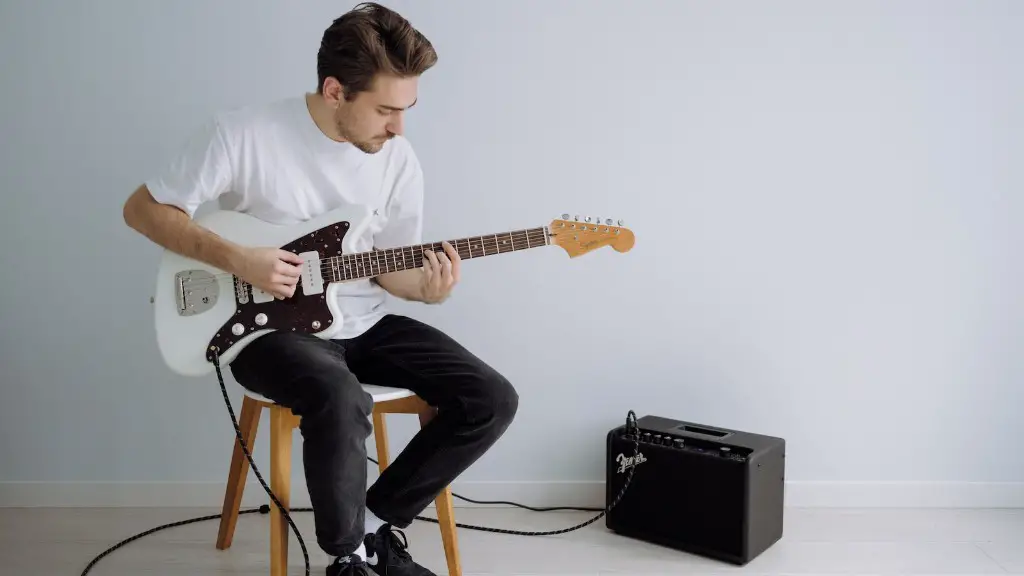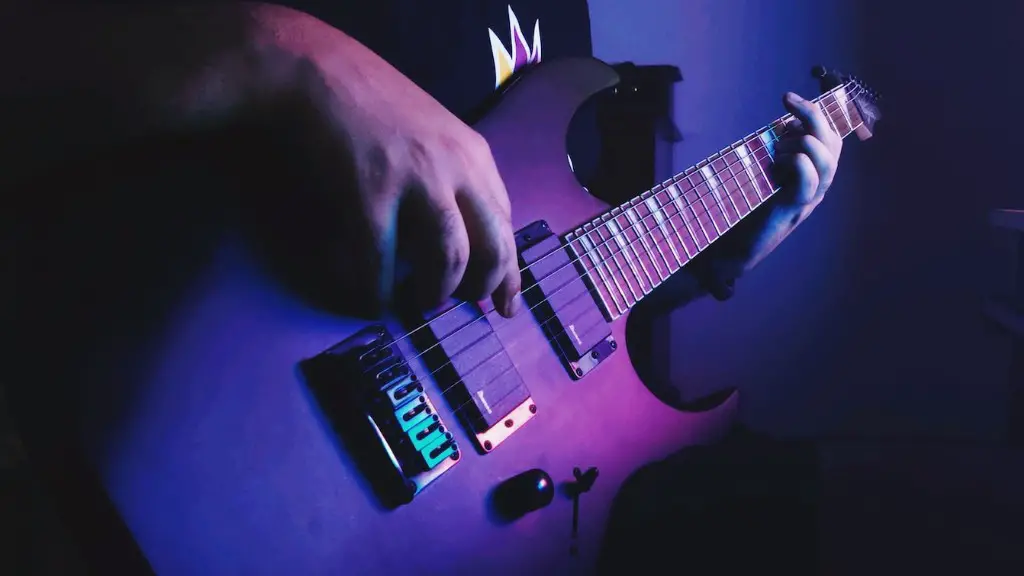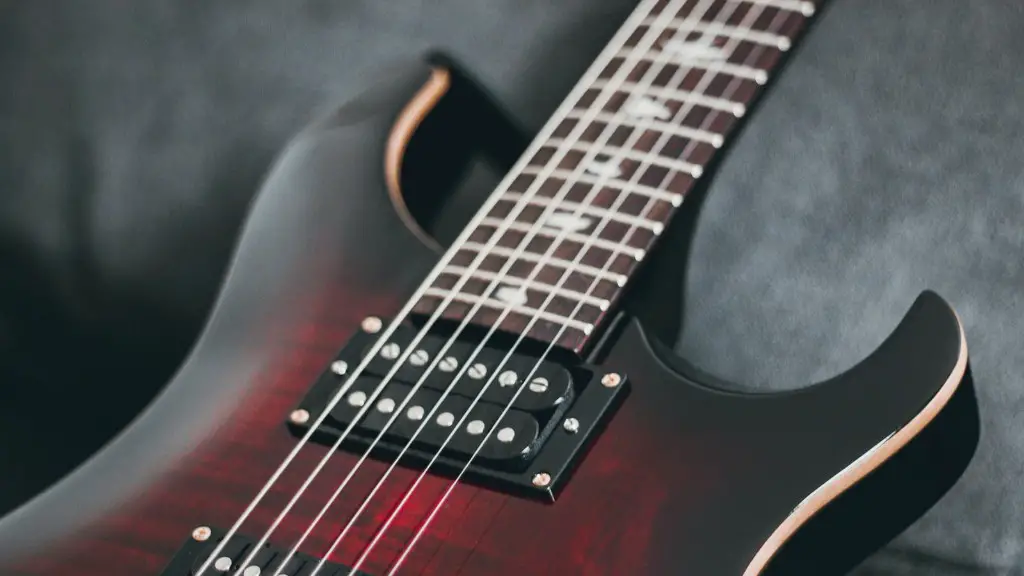Building a homemade electric guitar can be a fun and rewarding project. With just some basic tools and parts, you can create a unique instrument that you can proudly show off to friends and family. It’s important to take your time with the project and plan out what type of guitar you want before you start building.
You’ll need to gather the materials and supplies needed for the project, such as wood, frets, pickups, wiring, strings, and hardware. Once you have all of your parts assembled, it’s time to start constructing the body of your guitar. You’ll also need to install the pickups and wiring in order to get your homemade electric guitar up and running.
Finally, you’ll need to tune your instrument so it sounds great! Learning how to build a homemade electric guitar is an enjoyable experience that will give you a sense of pride knowing that you created something with your own hands. Get ready to enjoy playing music with your own custom-made electric guitar!
Choosing the Right Tools
Building a homemade electric guitar is a rewarding and challenging project that requires careful planning and the right tools. To get started, you’ll need woodworking tools such as a saw, drill, sander, and jigsaw. You’ll also need basic electrical supplies including soldering iron, wire strippers, and shrink wrap. In addition to these items, you’ll need to have access to a fret saw for cutting out the slots for the frets on the neck of your guitar. You may also want to invest in specialized tools such as an electric router for shaping parts of your guitar’s body. Finally, it’s important to have access to quality strings to ensure your guitar sounds its best. By having the right tools on hand before you begin building your homemade electric guitar, you can make sure that every step of the process goes smoothly.
Once you’ve gathered all of the necessary supplies and tools, it’s time to start putting things together. Be sure to take measurements carefully and use templates when possible so that everything fits together properly. It’s also important to read through instructions thoroughly before beginning any step of the process so that you understand what needs to be done and in what order. With patience and attention to detail, you’ll soon find yourself with a beautiful homemade electric guitar ready for playing!
Crafting the Guitar Body
Building a homemade electric guitar can be a fun and rewarding experience. The body is one of the most important components and must be crafted with care. The first step is to select the type of wood you will use for the body. Hardwoods such as maple, mahogany, or ash are popular choices for electric guitars. Once you have chosen your wood, cut it to size according to your plans or template, and then sand it down until it is smooth. You may also want to shape the edges using a router or chisel. Once you have completed these steps, you can apply an finish to protect the wood and give it a professional look.
Next, the pickguard needs to be installed. This is an important step as it will protect the body from damage due to contact with your fingers and pick while playing. Attach the pickguard using screws or adhesive tape and then secure any other hardware such as knobs or bridge posts.
Finally, drill out any necessary holes in the guitar body, depending on what type of pickups you are using. Connect all wiring and hardware according to your plans and once everything is in place you can enjoy playing your homemade electric guitar!
Installing the Neck and Headstock
Building a homemade electric guitar can be a rewarding project. When it comes time to install the neck and headstock, there are several steps you will need to take. Firstly, attach the neck to the body of the guitar with screws. Make sure the screws are tight and secure so that the neck won’t wobble or move when playing. Next, attach the tuning pegs or ‘machine heads’ to the headstock. Make sure they are properly aligned for optimal tuning when playing. Lastly, attach strings to each tuning peg and adjust them as necessary until they are in tune.
When adjusting strings, it is important to make sure that they are tightened correctly so that they do not slip or cause buzzing noises when strumming or picking notes. Adjusting string tension is essential for getting great sounds out of your homemade electric guitar! Take your time to ensure each string is adjusted correctly for optimal performance.
Installing the Pickups and Bridge
Installing pickups and a bridge is the final step in building a homemade electric guitar. It’s an important step that requires some knowledge of electronics. Start by soldering wires to the pickups, which are magnets wrapped in copper wire. Make sure to connect each pickup properly to the tone and volume knobs, as well as the output jack. Then attach the bridge, which helps determine where to place your fingers when playing chords or notes. You’ll need to adjust each saddle individually for proper intonation. Finally, attach the strings and tune your guitar.
Once you’ve completed these steps, you’ll be able to play your homemade electric guitar. With a little practice and patience, you’ll soon be able to strum away with pride!
Connecting Electronics and Knobs
Building a homemade electric guitar is an exciting project that can be both fun and rewarding. The most important step in the process is connecting the electronics and knobs. This involves wiring the pickups, setting up the switches, and attaching the volume and tone knobs. It’s important to be aware of how electricity works before attempting this project, as it’s crucial to understand how to safely connect these components correctly.
Once you understand the basics of electricity, you’ll be ready to start connecting your electronics. Start by wiring your pickups, then set up your switches. Make sure all connections are secure and in line with their respective components. Afterward, attach each knob onto its respective potentiometer and connect it to its switch. Finally, solder all connections into place for a secure fit.
Once you have completed this step-by-step process, you will have successfully connected all of your electronics and knobs on your homemade electric guitar! With a little bit of patience and know-how, anyone can build their own electric guitar from scratch!



